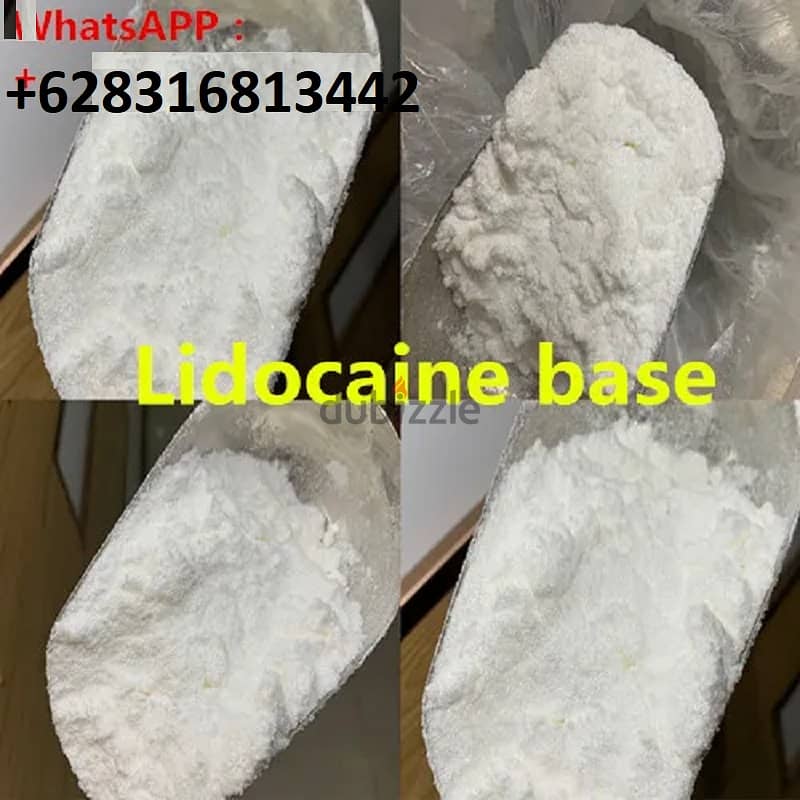All categories
1 / 1
Details
ConditionNew
Description
Key Features
Product Description
Lidocaine Base
Synonyms: Antrolin; Cuivasil; Dalcaine; ELA-Max; Esracaine; Isicaine; Jetocaine; Leostesin; Lidocadren; Lidoderm; Linisol
Lidocaine CAS: 137-58-6
Lidocaine Formula: C14H22N2O
Lidocaine Molecular Weight: 234.34
Lidocaine EINECS: 205-302-8
Lidocaine Assay: 99.0~101.0%
Lidocaine Appearance: White crystalline powder
Lidocaine Package: 25kg/drum
Lidocaine Density: 1.026 g/cm3
Applications
The efficacy profile of lidocaine as a local anesthetic is characterized by a rapid onset of action and intermediate duration of efficacy. Therefore, lidocaine is suitable for infiltration, block, and surface anesthesia. Longer-acting substances such asbupivacaine are sometimes given preference for subdural and epidural anesthesias; lidocaine, though, has the advantage of a rapid onset of action. Epinephrine vasoconstricts arteries, reducing bleeding and also delays the resorption of lidocaine, almost doubling the duration of anaesthesia. For surface anesthesia, several available formulations can be used e. g. for endoscopies, before intubations, etc. Buffering the pH of lidocaine makes local freezing less painful. Lidocaine drops can be used on the eyes for short ophthalmic procedures.
Topical lidocaine has been shown in some patients to relieve the pain of postherpetic neuralgia (a complication of shingles), though not enough study evidence exists to recommend it as a first-line treatment. ntravenous lidocaine also has uses as a temporary fix for tinnitus. Although not completely curing the disorder, it has been shown to reduce the effects by around two-thirds.
Lidocaine is also the most important class-1b antiarrhythmic drug; it is used intravenously for the treatment of ventricular arrhythmias (for acute myocardial infarction, digoxin poisoning, cardioversion, or cardiac catheterization) if amiodarone is not available or contraindicated. Lidocaine should be given for this indication after defibrillation, CPR, and vasopressors have been initiated. A routine prophylactic administration is no longer recommended for acute cardiac infarction; the overall benefit of this measure is not convincing.
Inhaled lidocaine can be used as an antitussive (cough suppressor) acting peripherally to reduce the cough reflex. This application can be implemented as a safety and comfort measure for patients who have to be intubated, as it reduces the incidence of coughing and any tracheal damage it might cause when emerging from anesthesia.
Lidocaine, along with ethanol, ammonia, and acetic acid, has also been proven to be effective in treating jellyfish stings, both numbing the affected area and preventing further nematocyst discharge.
Items TestedSpecificationBP2007Result
CharactersWhite or slightly yellow crystal powder with characteristic odorWhite crystal powder with weak odor
Melting pointMelting point: 66 degree to 70 degree66.6 degree-68.5 degree
IdentificationB\C\D\E
Comply with the requirementConforms
Appearance of solutionClear and colorlessConforms
WaterNot more than 0.5%0.3%
SulphateNot more than0.1%Conforms
ChlorideNot more than 0.0035%0.0025%
Heavy MetalsNot more than 0.002%0.001%
Residue on IgnitionNot more than 0.1%0.02%
Impurity
(2\6-dimethylaniline content)Not more than 0.01%Conforms
Assay (HPLC)99.0%-101.0%99.6%
ConclusionConforms BP2007
Carrie
Location
Kuwait
Ad id 102512826
Report this ad
Listed by private user
AMIN
Member since Nov 2024
See profile
Your safety matters to us!
- Only meet in public / crowded places.
- Never go alone to meet a buyer / seller, always take someone with you.
- Check and inspect the product properly before purchasing it.
- Never pay anything in advance or transfer money before inspecting the product.

